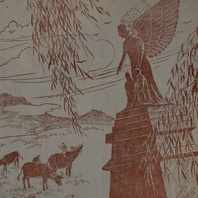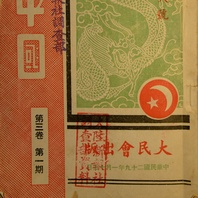Visual budaya pendudukan pada zaman perang China
Sebahagian besar kawasan utara, timur dan selatan China telah diduduki oleh tentera Empayar Jepun, atau dari “rejim klien” Republik China yang disokong oleh tentera Jepun, dalam tempoh masa antara Disember 1937 hingga Ogos 1945. Walaubagaimanapun, meskipun situasi kekejaman, kekurangan serta keganasan pendudukan berlaku, ianya sering menjadi tumpuan kesusasteraan ahli akademik pada tempoh tersebut, termasuk para sarjana yang semakin mengkaji dari pelbagai sudut serta melihat reaksi masyarakat Cina yang hidup dan berada dibawah fasa pendudukan perang China-Jepun. Terdapat juga kesedaran yang semakin meningkat dalam bidang sejarah China moden yang menyatakan bahawa rejim dan organisasi China yang muncul di bawah penguasaan Jepun dalam tempoh ini layak untuk dikaji dan mengkaji hak serta pendapat mereka sendiri, seterusnya berpeluang untuk berkongsi kepada umum berkenaan kedua-dua sifat pengalaman ketika perang serta mengenai “budaya politik” (dan politik budaya) pada zaman pendudukan secara lebih umum dan terbuka.
Kajian kes ini termasuk contoh visual budaya yang dihasilakan di sekitar kawasan China yang diduduki oleh pihak Jepun antara tahun 1937 dan 1945. Perkara utamanya termasuklah bahan yang dihasilkan oleh “kolaborasi” pentadbiran Cina. Ini merangkumi Kerajaan Sementara Republik China (PGROC) di utara China (1937-1940); Kerajaan Reformasi Republik China (RGROC) di timur China (1938-1940); dan Kerajaan Negara Republik China yang Disusun Semula (RNG) yang diasaskan pada Mac tahun 1940, ianya melibatkan kebanyakan negeri “klien” sedia ada, serta yang hilang kewujudannya atau lenyap pada tahun 1945.
Explore Themes
Return to the capital
In March 1940, a new occupation state was founded in wartime China, when a group of defectors “returned to the capital” (huandu) of Nanjing to — in their view — restore the Nationalist Chinese government that had fled from the Japanese at the end of 1937. The occasion of this “return” was marked by a series of public celebrations but also by a great deal of internal debate about what this new “occupation state” would look like. The huandu period might be said to have lasted until November 1940, when a new treaty was signed between Nanjing and Tokyo, and the “occupation state” was formally recognised by the Japanese. The huandu of 30 March would remain an important commemorative date in Nanjing through until the end of the war.
Rural Pacification
The qingxiang (Rural Pacification) campaigns were introduced by the Japanese and the RNG in the summer of 1941, as a response to communist resistance in rural Zhejiang and Jiangsu provinces. The campaigns continued in various guises through until 1945. Rural Pacification was important for the RNG as it enabled this “client regime” to extend its influence into the countryside. It also enabled RNG cadres to re-imagine rural China under occupation in an overtly Nationalist fashion.
Entertainment in occupied China
Despite (or perhaps because of) the Japanese occupation, the commercial entertainment industry thrived in wartime China, especially (though not exclusively) in Shanghai. The film industry, print culture, and commercial music all continued firstly in gudao Shanghai (i.e., that part of the city not occupied by the Japanese), but also, after December 1941, throughout Shanghai as a whole.
New Citizens Movement
The New Citizens Movement (Xin guomin yundong) was initiated in January 1942. It called for the rejuvenation of a revolutionary spirit among occupied China’s youth, and the “liberation” of Asia by the Japanese. It was also a performative movement, in which youth were expected to display their loyalty to the Republican Chinese state under occupation. The movement was inspired by the rhetoric of the May 4th movement, but also by patterns of youth mobilization developed in other parts of the Axis world (namely Japan and Germany).

